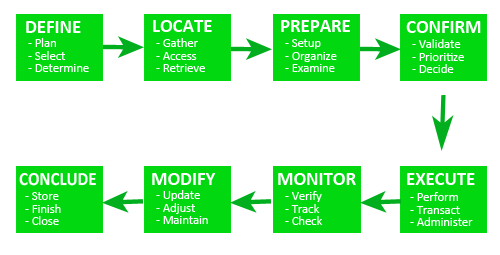Helping your customers get the job done
I can’t think of anything more critical for a company than to learn how to provide value for its customers.
Understanding your customers’ needs is at the core of your company’s well-being.
It’s the foundation that will allow your company to grow, by showing you where to improve or innovate your products or services. As we’ll see later on, it’s also the backbone that allows you to organize and set a direction for your company —without this knowledge, you cannot control, less manage a company.
To begin with, let’s not forget that a need was the original spark which started the company. A start-up finds a need in the marketplace, then offers a service to fulfill this need. If someone sees value in this service, greater than its costs, the company is in business because its gained a customer. Which reminds me of Paul Orfelea’s comments on opportunities:
“Look at places where people are standing in line. How much money are they making? That’s how I started my photocopier business, Kinko’s.”
You might want to check Tom Hulme’s enlightening presentation on visualizing a simple business model to get a clear perspective of the interactions between the different parts of a company.
(Also from IDEO, I found this must see presentation of Muhammad Yunus’s (from Grameen Bank) brilliant idea of a sustainable Social Business, as opposed to a charitable one, where reinvesting is needed to keep the charity from floundering).
True. Shareholders and employees, as well as the community, have an important say in what a company can do, but without the fickle customer there is no business! You could make your shareholders happier for a while by cutting back on your product’s safety, quality, delivery or cost, but you’ll risk the company’s long term survival by supplying a poor product to the customer. The same can be said if the company does not care to retain the right talent in a competitive world, nor, if the company harms the environment while providing its services.
It’s smarter to ask your customer how your service helps him get his job done. The customer is interested in making a hole, not the drill.
According to Lance Bettencourt and Tony Ulwick from Strategyn:
Companies must shift their attention from the product and instead focus their requirement-gathering efforts on the execution of the job that the product or service is intended to perform.
In order to do so, companies need to get closer to the customer. Let me give you an example. A poorly rated customer service operation was primarily focused on reducing the total time it took to service a client. When customers were approached, they revealed that their most important metric for the quality of the service was related to the time they had to wait before anyone picked up the call. If the call was answered promptly, they assumed that from there on the customer rep was hard at work on their issue, so they didn’t mind waiting…
You have to ask lots of questions. It’s always iterating between your ideas and the customer’s answers, but you must be very careful and precise about how you state questions and the resulting customer requirements. You cannot afford to err, your product offering depends on determining your customers true requirements. How can your company survive if it offers the wrong products? How can it possibly grow?
In Tony’s presentation Understanding the Customer Need, he recommends applying a lean framework to the job that the customer needs to be done, with metrics to judge the success at every step of the process.
Having this in mind, Tony recommends going over the following checklist to determine the metrics or needs of a customer:
- Use a precise structure for the requirement statements.
- Build a job process flow map.
- Conduct ethnographic interviews.
- Conduct the bulk of the interviews.
- Construct the job map.
The requirement statements must be brief, unambiguous, consistent and timeless, hence they cannot contain specs nor solutions, nor references to technology.
We also know that we may improve the speed of a process, its predictability and output. So, your questions must include these measurable characteristics in order to obtain capable metrics that capture the customer’s measures of success.
The preferred requirement statements structure should look like this:
| Direction of Improvement | Minimize |
| Unit of Measure | the time it takes |
| Object of Control | to verify the accuracy of a desired outcome |
| Contextual Clarifier | with a customer |
| Example of Object of Control | for its meaning, exactness, completeness, etc. |
Through personal interviews, deconstruct the job process, building a job map with the steps needed to get the job done and the metrics that can measure customer satisfaction at each step —a la value stream diagram in lean process analysis.

The above general process chart is a good starting point to build a job process map.
These interviews have the purpose of giving the interviewer context, so he will be a better interviewer to extract the requirement statements during his next customer interviews.
Once the context and the questions have been digested, it’s time to get your interviewers out there to get as many requirements as you possibly can.
Reconstructing the job map with its metrics is a way of verifying that you’re not missing anything.
At the end of the process, you will have a customer rated requirement statements list. The features (or requirements) that present a low customer satisfaction score are prime prospects for innovation.
With this list of requirements, you can also start the strategic dashboard for the company. You have the rows, or requirements. Then, you need to determine the how’s, or the columns of this table. At this point, you should start defining your vision and mission for the company —the how things are going to be done around the company…
But, that’s another story that I’ll leave for a next occasion.


